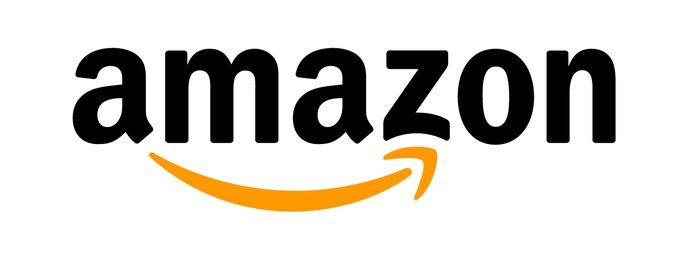亚马逊公司 (AMZN.US) 2025年第二季度业绩电话
文章语言:
简
繁
EN
Share
Minutes
原文
会议摘要
Amazon reported a 12% year-over-year revenue increase to $167.7 billion, with operating income at $19.2 billion. Key segments showed growth, including North America with $100.1 billion in revenue and $7.5 billion in operating income, International with $36.8 billion in revenue and $1.5 billion in operating income, and AWS with $30.9 billion in revenue and $10.2 billion in operating income. The company highlighted improvements in delivery speed, inventory placement, and cost reduction, alongside significant growth in advertising revenue and AWS's advancements in generative AI services and hardware.
会议速览
In the second quarter of 2025, Amazon achieved a revenue of 167.7 billion U.S. dollars, a year-on-year increase of 12%, with operating income showing improvement. The company emphasized the concepts of input and output in its business, pointing out that in the retail business, selection, low prices, and fast delivery are the most important input factors. In this quarter, Amazon made progress in product selection, including re-collaborating with brands like Nike, and expanding successful perishable goods pilot projects. In addition, Amazon's sales of everyday essentials have grown significantly, and it has been named the lowest-priced retailer in the United States for four consecutive years by research institutions. The recent Prime Day event also set new records in sales, number of items sold, and Prime membership registrations.
Although there is uncertainty about the impact of tariffs on retail prices and consumption, Amazon has not seen a decrease in demand or significant price increases so far. With a market that has over 2 million sellers, each with different strategies, some of the increased costs may be borne by consumers. Amazon has significantly improved delivery speed and efficiency, and reduced costs by optimizing its logistics network through measures such as regionalized structures, direct line delivery, shortening transportation distances, reducing processing steps, and order consolidation. At the same time, the company is expanding its same-day and next-day delivery services in the United States, using automation and robot technology to further improve cost efficiency and customer experience, including innovative automated packaging sorting and robot coordination systems. Amazon's advertising business also achieved strong growth this quarter, with revenue reaching $7 billion.
Amazon has shown strong momentum in the advertising business, especially its full-funnel advertising products that cover over hundreds of millions of advertising-supported audiences in the US market. It covers multiple areas including retail, video, games, television, sports, and has established important partnerships with Roku and Disney to enhance the accuracy and efficiency of its advertising delivery. At the same time, Amazon's cloud service AWS continues to grow rapidly, reaching cooperation agreements with many well-known companies, especially in the field of artificial intelligence, AWS has shown huge market demand and supply potential.
AWS在AI技术与硬件方面取得了显著进展,包括推出定制AI芯片、增强Amazon Bedrock服务以及Nvidia Grace Blackwell超级芯片的运用。Anthropic Claude IV-V模型在Bedrock中迅速成长,而Amazon Nova模型则因其定制化能力和成本优化受到欢迎。此外,AWS推出了Agent Core,旨在解决企业部署AI代理的安全和扩展性问题。在应用层面,AWS Transform和Cura等新产品旨在简化主框架现代化和软件开发流程。同时,Amazon在其他领域也展现出强劲势头,包括Avixa AI助手、Project Kuiper卫星互联网服务、Prime Video Live Sports以及Amazon Pharmacy的增长。
Global e-commerce giants achieved revenue of $167.7 billion in the second quarter, excluding the impact of foreign exchange, showing significant growth compared to the same period last year. Revenue from North American and international markets increased by 11% respectively, while global paid units grew by 12%. The company emphasized the importance of customer value, improving customer satisfaction by optimizing prices, increasing inventory, and providing fast delivery services. In addition, the global third-party seller unit mix reached a historical high, increasing by basis points compared to the same quarter last year, demonstrating the important contribution of sellers to the business.
Amazon closely monitors the macroeconomic environment, especially the impact of tariffs. Its operating income in North America has increased significantly to $7.5 billion, and international operating income has also risen sharply to $1.5 billion. The company has achieved improvements in cost structure and faster delivery speed through optimizing inventory management, improving transportation network efficiency, and adopting automation technology. In addition, the advertising business has become an important source of profitability, growing by 22%, particularly showing strong performance in sponsored products. The omni-channel advertising strategy is well-received by brands and consumers.
In the second quarter, AWS achieved $30.9 billion in revenue, a year-on-year increase of 17.5%, with an annualized revenue exceeding $123 billion. Despite operating income reaching $10.2 billion, the quarterly operating profit margin decreased from 39.5% to 32.9%, mainly due to seasonal stock compensation, increased depreciation expenses, and foreign exchange fluctuations. The company will continue to increase investment in AI services, custom chips, and data centers, with the expectation that AWS operating profit margin will fluctuate with investment levels. Meanwhile, capital expenditures in the second quarter totaled $31.4 billion, mainly supporting the expansion of AI services, chips, data centers, and logistics networks to facilitate business growth, improve delivery speed, and reduce costs. These investments will lay a foundation for future development over the coming years.
The company's financial guidance for the third quarter indicates that net sales are expected to be between $17.4 billion and $17.95 billion, while operating income is expected to be between $1.55 billion and $2.05 billion. At the same time, the company emphasized its focus on providing excellent customer value through a wide selection, competitive prices, and unparalleled convenience to drive better customer experiences and create long-term shareholder value. Additionally, the company also forecasted that currency exchange rate movements will have a favorable impact of approximately a few hundred basis points.
Amazon is currently unable to predict future changes in tariffs and their impact, especially in the uncertain Chinese market. As of now, the company has not observed a decrease in demand or a significant increase in average selling prices, but this may change in the future. At the same time, Amazon points out the rapid growth of AWS cloud services, stating that although AWS has a larger market share, its growth rate is also influenced by both customer demand and infrastructure supply.
The conversation emphasized AWS's dominant position in the cloud services market, pointing out that its business scale far exceeds its competitors and it is leading in terms of growth rate. AWS's advantages lie in its outstanding operational performance, high security, rich service functions, and comprehensive AI solutions from the bottom to the top. Despite facing challenges of demand exceeding supply, AWS is actively expanding its capacity to meet the needs of more customers. Although it has reached an annual revenue scale of $123 billion, AWS believes that the market is still in its early stages and is optimistic about its future growth.
In the conversation, the backlog of orders for AWS was discussed, reaching $195 billion by the end of the quarter, up 25% year-on-year. The main supply constraints are power supply shortages, as well as restrictions on chips and server components, and it is expected to take several quarters to gradually resolve these capacity issues. In addition, the potential of Alexa Plus was also explored, from a financial perspective, it is expected to reduce friction and bring greater economic benefits through increasing user engagement, service revenue, advertising, and retail sales.
Compared to previous versions, Alexa Plus has significantly improved in intelligence and functionality. It can not only answer questions but also perform various operations such as playing music and videos, adjusting home devices, etc., all through natural language. Since its launch in the United States, it has received positive reviews from users, and both usage and satisfaction have increased. In the future, Alexa Plus is expected to play a greater role in shopping experiences, advertising, and possible subscription models. Currently, private members can use it for free, while non-members need to pay a monthly fee. The company will continue to iterate and improve this product.
This discussion focuses on the driving factors and sustainability of revenue and profit growth in the company's international business segment, and also reviews the current progress of the Kuyper project, which has been less mentioned recently.
Amazon's international business showed strong revenue growth and an improvement in operating profit margins in the current quarter, especially in mature markets such as the UK, Germany, and Japan, as well as through increased efficiency in the transport network and expanded product offerings to achieve cost reductions and faster speeds. Emerging market countries are also gradually developing, despite being at different stages of profitability. In addition, the Project Kuiper satellite network project aims to provide services to 4-5 million households worldwide that lack access to broadband through low-earth orbit satellites, addressing the digital divide issue. The project is expected to have a competitive advantage in terms of performance, price, and seamless connection with AWS, and has already secured collaboration agreements with multiple businesses and governments, with commercial services expected to launch later this year or early next year.
Facing concerns from Wall Street about AWS falling behind in the field of generative AI, AWS emphasizes that the current AI field is still in its early stages, with limited numbers of large-scale cutting-edge models and generative AI applications. AWS is supporting numerous enterprises and startups in developing and running AI services. Despite some large models and applications being trained on other platforms, AWS still carries a significant portion of AI applications and expects its position and business in the AI field to accelerate growth with the widespread deployment of AI applications and agents.
In the field of AI, customers pay attention to different levels of the stack when choosing infrastructure, especially focusing on the performance and price of computing hardware, because most of the costs occur during the inference stage rather than training. Through deep collaboration with Nvidia, the company has developed customized silicon chips, such as Graviton and Tranium, which provide better cost-performance than x86 processors and GPUs on the market, improving the performance of AI models such as Anthropics and Bedrock. The company is continuously researching and developing to further optimize the price-performance ratio.
The conversation emphasized the core role of cloud computing in building AI models, utilizing cutting-edge models, and developing high-quality generative AI applications. Through services like SageMaker and Bedrock, enterprises are able to more effectively build and utilize AI models. Additionally, cloud computing addresses the challenges of deploying AI agents in a secure and scalable manner, making the process of building and deploying AI agents more streamlined through new features. Furthermore, considering that a large amount of IT spending still occurs on-premises, cloud computing services like AWS Transform and Curro are dedicated to simplifying the process of migrating from traditional infrastructure to the cloud in order to accelerate enterprise digital transformation.
Discussed AI technology, especially the application and development prospects of generative AI in the current enterprise cloud services field, emphasized that AI as part of the infrastructure will be closely integrated with services such as computing, storage, and databases, running close to enterprise data and applications. At the same time, it mentioned the trend of AI technology accelerating the modernization of enterprise infrastructure and migration to the cloud, as well as the large-scale deployment of AI applications in the enterprise production environment. In addition, it also explored Amazon's internal use of generative AI, expecting it to improve efficiency and accelerate product time-to-market.
The dialogue discussed artificial intelligence (AI) as the greatest technological revolution in one's lifetime, and how it profoundly impacts customer experience, work processes, and internal operations of businesses, including coding, data analysis, research, finance, business process automation, and customer service in multiple areas. By adopting AI, businesses can not only accelerate product launch speed, improve work efficiency, but also significantly enhance employee job satisfaction, allowing them to focus on more creative and valuable tasks.
In the conference call, Amazon discussed its strong performance in the second quarter, including growth in sales and the success of Prime Day. The company emphasized its control over pricing, selection, and convenience, as well as improvements in fast shipping and inventory management. Despite uncertainties regarding tariffs, Amazon remains optimistic about future growth. At the same time, the company did not provide specific guidance for the third quarter, but stated that it will be discussed in the next quarter's meeting.
要点回答
Q:What are the recent advancements in automation and robotics that have been implemented by the company?
A:The company has deployed a script millionth robot across their global fulfillment network and introduced innovations like automated package sorting and technology that brings packages directly to employees at an ergonomic height. They have also rolled out Deep Fleet, which improves move robot travel efficiency by 10%, and the technology helps to coordinate robots' movements, reduce bottlenecks, and deliver faster times and lower costs.
Q:What is the role of Amazon Ads in the company's revenue generation?
A:Amazon Ads has generated significant revenue, amounting to $7 billion in the quarter mentioned, and is contributing to strong growth. It is noted that advertisers benefit from generative AI, exceptional programming, innovative technology, and unrivaled signals, measurement, and audience development which provide relevancy for consumers and return on investment for brands.
Q:What is Amazon Demand Side Platform (DSP) and how has it partnered with other companies to enhance advertising?
A:Amazon Demand Side Platform (DSP) enables advertisers to plan, activate, and measure full-funnel investments. It leverages trillions of proprietary browsing, shopping, and streaming signals along with extensive supply side relationships and secure clean rooms to optimize advertising and deliver efficient and effective outcomes. A significant partnership with Roku has been announced, providing access to over 100 million connected TV households. Additionally, an integration with Disney's real-time ad exchange has been made, allowing advertisers to gain direct access to Disney's premium inventory across platforms.
Q:How has AWS grown in terms of revenue and customer agreements?
A:AWS has grown significantly, recording a year-over-year increase in revenue and now has an annualized revenue run rate of over $123 billion. The company has signed new agreements with various companies such as PepsiCo, Airbnb, Peloton, Nasdaq, London Stock Exchange, Nissan, GitLab, Warner Brothers Discovery, 12 labs, FICO, Iberia Airlines, SK Telecom, and NaaS. These partnerships are part of the ongoing transition of organizations to the cloud.
Q:What are some recent advancements in AI and machine learning offerings by the company?
A:The company has introduced several AI and machine learning advancements including the availability of larger quantities of custom AI chip training capacity for Anthropic's newest generation C models, the launch of Amazon ElasticCompute Cloud (EC2) instances powered by Nvidia Grace Blackwell superchips, and the addition of Anthropic Claude IV to Amazon Bedrock, the company's generative AI service. Also, Amazon Nova, the company's frontier model, has seen strong adoption and is now the second most popular foundation model in Bedrock. New features in Nova allow customers to customize their models. The release of strands and open-source Wade has also made it easier for developers to build agents.
Q:What new tools and services has AWS introduced for developers?
A:AWS has introduced a variety of new tools and services for developers, including Agent Core, which offers a secure serverless runtime for both synchronous and asynchronous execution; AWS Lambda@Edge, which enables developers to deploy agents more expansively; AWS Code Automator, which allows developers to use natural language to chat with a coding agent to build code; and Cura, a new AI integrated development environment. These developments are aimed at transforming software development and easing the transition from prototyping to production.
Q:How is Amazon Alexa Plus contributing to the company's advancement in generative AI?
A:Amazon Alexa Plus, an assistant powered by generative AI, is in early access for US customers and is expected to provide positive feedback and experiences to millions. The company plans to iterate on this experience, indicating that Alexa Plus is a key area of focus for integrating generative AI technologies within the company.
Q:What achievements have been made with Project Kuiper?
A:The company has successfully launched its third mission for Project Kuiper, an initiative aimed at providing internet services. Although the service has not yet been launched commercially, the company has secured agreements with numerous enterprise and government customers for future use in services like Prime Video and live sports.
Q:What positive developments are mentioned for Amazon's entertainment ventures?
A:The positive developments mentioned for Amazon's entertainment ventures include the first season of NASCAR drawing about 2 million viewers per race, the youngest audience among NASCAR broadcasters in over a decade, the stellar broadcasting crew for the upcoming first NBA season, and the appointment of an Academy Award nominee as the director for the next James Bond film.
Q:What was the year-over-year change in worldwide revenue for the quarter, and what was the impact of foreign exchange?
A:The worldwide revenue was $167.7 billion, which was a script increase year over year, excluding the impact of foreign exchange. Foreign exchange had a script $1 billion favorable impact to revenue in the quarter.
Q:What were the key performance metrics that saw broad-based strength in the second quarter?
A:In the second quarter, the key performance metrics that saw broad-based strength included sharp pricing, more in-stock availability, and record delivery speeds for Prime members.
Q:What is Amazon's strategy in response to the macroeconomic environment and the impact of tariffs?
A:Amazon is closely monitoring the macroeconomic environment, including the impact of tariffs. The company's Q2 plan factored in a range of assumptions and they will continue to consider various assumptions going forward.
Q:What were the operating income figures and operating margins for the North American and International segments?
A:North America's segment operating income was $7.5 billion, an increase of $2.5 billion year on year. The North America operating margin was 7.5%, up 190 basis points year over year. The International segment operating income was $1.5 billion, up $1.2 billion year over year. The International operating margin was 4.1%.
Q:How did the productivity gains in transportation network contribute to the positive operating income?
A:Productivity gains in the transportation network were driven by improved inventory placement, strong leverage on high unit volumes, and higher levels of in-demand inventory from both first-party and third-party selling partners. These factors contributed to faster delivery speeds and lower costs, which in turn led to a positive operating income.
Q:What are the main drivers behind the year-over-year growth in advertising revenue?
A:Advertising revenue grew 22% year over year, primarily driven by sponsored products and strong traffic in the stores. This growth is positioned as an important contributor to the profitability of the North American and international segments.
Q:What is the latest growth rate and annualized revenue run rate for the AWS segment?
A:Revenue for the AWS segment was $30.9 billion, an increase of 17.5% year over year. AWS now has an annualized revenue run rate of more than $123 billion.
Q:How does the company plan to continue investing in its services and infrastructure?
A:The company plans to continue investing in its services and infrastructure by focusing on generative AI and non-generative AI businesses, custom silicon like Tium, data centers, and power to support growth. This includes investments in chips, power, and tech infrastructure to support both the North America and international segments, as well as fulfillment and transportation networks to support business growth, improve delivery speeds, and lower costs.
Q:What factors contributed to the decrease in AWS segment margins from Q1 to Q2?
A:The decrease in AWS segment margins from Q1 to Q2 was primarily due to a seasonal step-up in stock-based compensation expense driven by the timing of the company's annual compensation cycle. Additionally, higher depreciation expense and unfavorable impacts from year-over-year fluctuations in foreign exchange rates contributed to the decline.
Q:What is the expected range for third-quarter net sales and operating income, and what is the company's focus for the quarter?
A:Third-quarter net sales are expected to be between $174 billion and $179.5 billion, with an estimated year-over-year impact of changes in foreign exchange rates based on current rates that are expected to be a favorable impact of approximately script basis points. Q3 operating income is expected to be between $15.5 billion and $20.5 billion. The company's focus for the quarter will be on delivering exceptional customer value through broad selection, competitive prices, and unmatched convenience.

Amazon.com, Inc.
Follow





